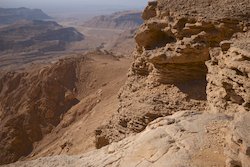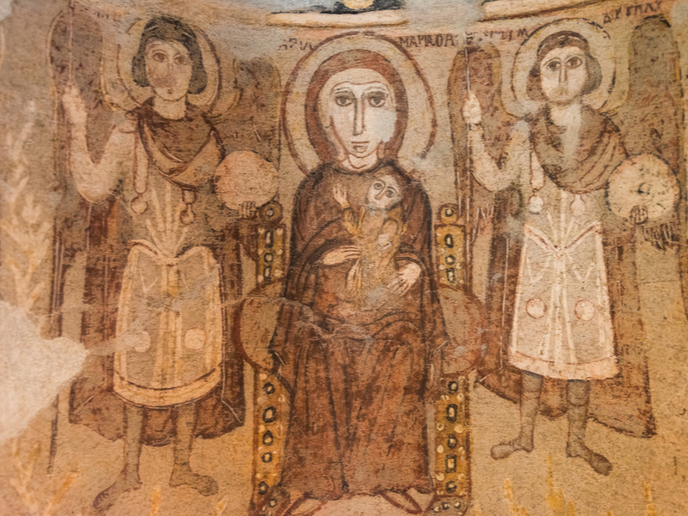New insights into the role of Coptic monasteries in the economy of late antique Egypt
Monasteries have been a significant part of the Egyptian landscape since the beginnings of Christianity in the country, with records made primarily in the Coptic language. Although there are still many extant monasteries, and their significance within past power structures is known, not much research has been carried out into their impact on the Egyptian administrative and economic framework of prior times. Their role in these areas has been overlooked largely because the primary sources have either been difficult to access or have not attracted enough interest. “The material can only be read by specialists studying Coptic, and they are often more interested in religious or literary texts, rather than administrative documents,” explains MONASPOWER (Monasteries as Institutional Powers in Late Antique and Early Islamic Egypt: Evidence from Neglected Coptic Sources) lead researcher Dr Jennifer Cromwell. Gathering the evidence MONASPOWER set out to study the economic position of Coptic monasteries during late antique Egypt based on the neglected evidence from two sources: the monastery of Apa Thomas at Wadi Sarga and the corpus of non-literary Coptic texts in the collection of the University of Copenhagen. “I wanted to provide material that would enable a more realistic understanding of the economy of late antique Egypt (the fifth to eighth centuries) by focusing on the evidence from Coptic sources from monasteries in the Nile valley,” says Marie-Curie Fellow Dr Cromwell. Letters, legal documents, accounts, lists, receipts, of the type considered by the project, provide evidence about the reality of day-to-day life. “They give us an insight into personal relationships, disputes, food, property, wealth, health – the good and the bad of actual life.” To build up a clearer picture, Dr Cromwell benefitted from the documents found during the excavations of the Wadi Sarga monastery in central Egypt, in 1913/1914. A few hundred short texts were published in 1922, but many more were not. One of the project’s goals was to publish and study the entire corpus. Ceramic wares from the site, along with textile fragments, terracotta figures and wooden, metal and bone objects were also brought back and now form part of the British Museum’s collection. This archaeological record complemented the textual record, to produce a better understanding of life at the monastery. “Combining specialist skills from a range of individuals working on this material was one of the goals. It highlights the need for collaborative effort in order not to neglect potentially vital information,” says Dr Cromwell. MONASPOWER also drew on the unpublished papyrus documents in the Papyrus Carlsberg Collection, in Copenhagen. As a result of the project, hundreds of unpublished Coptic documents have been translated and are currently being submitted to open access journals for publication. An unprecedented focus Dr Cromwell is happy to acknowledge that by presenting a holistic study of the economic reality of Coptic monasteries, her findings can now be used in wider studies of the economy of the antique Mediterranean world. The project has also produced a volume on monastic economies in Egypt, Jordan, and Palestine. Currently under review, it is the first effort to examine these geographic areas collectively through this lens. MONASPOWER also brought together a diverse group of specialists across a range of disciplines, for the first time. “The project’s multidisciplinary approach generates new perspectives on the topic and brings to the fore material that is often overlooked by historians – archaeology (including theoretical approaches), art history, palaeobotany (the study of ancient floral remains), Greek texts, Coptic texts, literary and non-literary approaches,” says Dr Cromwell. The scholars contributing to the volume on monastic economies, themselves came from a wide variety of backgrounds, in terms of both nationalities (across Europe, the US, Egypt and Israel) as well as career stage (doctoral students, early career researchers, and professors). MONASPOWER has helped to reveal the extent to which Coptic monasteries contributed to the economy of late antique Egypt; underlining the fact that monasteries should not be considered solely as spiritual institutions reflecting specific forms of religious experience. Dr Cromwell explains, “In future studies of social and economic life in Egypt, the evidence from monasteries cannot be overlooked, doing so omits part of the picture and generates a skewed image of the ancient world.”
Keywords
MONASPOWER, Coptic monasteries, Greek texts, Coptic texts, Wadi Sarga monastery, late antique, early Islamic Egypt







